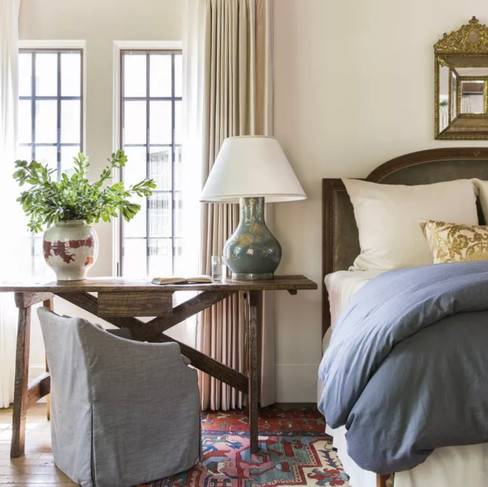One Room, Endless Possibilities: Embrace Multi-Functional Living!
- Tatum

- Oct 4, 2024
- 3 min read

Hello Decor Friends,
In today’s fast-paced world, homes need to be more adaptable than ever. Whether you’re working remotely, accommodating guests, or just making the most of a smaller living space, multi-functional room combinations are an innovative way to maximize every square foot. By blending functionality and style, you can design rooms that seamlessly transition from one purpose to another, making your home more flexible, efficient, and enjoyable.
The Home Office + Guest Room
One of the most popular multi-functional combinations is the home office and guest room. With more people working from home, dedicating an entire room solely for office use often isn’t practical, especially if you need to accommodate overnight guests. The key to making this combination work is flexible furniture.
A fold-out sofa or a Murphy bed can provide a comfortable sleeping area without taking up valuable floor space when not in use. Meanwhile, a well-designed desk that blends into the room’s décor can serve as a stylish workspace during the day. To ensure a seamless transition between work and rest, use storage solutions like built-in shelves or cabinets to keep office supplies out of sight when guests arrive.
Living Room + Dining Room
In open-concept homes, combining the living and dining areas is a practical way to make the most of shared spaces. The goal here is to create distinct zones that maintain their own identity while functioning together harmoniously. You can achieve this by using area rugs or furniture arrangements to define each space.For example, place a sofa with its back to the dining area to visually separate the two. A dining table with a bench can double as extra seating for larger gatherings, and extendable tables allow for more dining space when needed. Adding decorative touches that complement both areas, such as cohesive lighting fixtures or artwork, will tie the room together without making it feel crowded.Kitchen + Home OfficeWith more homes becoming multi-functional, the kitchen is evolving beyond its traditional role as a cooking space. If you’re short on space, your kitchen can double as a home office, especially if you have a kitchen island or breakfast nook. Install a bar-height stool and tuck a small laptop station into a corner of your kitchen or at the end of your island to create a productive work area without sacrificing cooking space.To maintain a clear divide between work and meal prep, consider adding smart storage solutions. Keep your office supplies in decorative containers or drawers that blend with the kitchen’s style. This way, when it’s time to cook, you can easily clear the workspace.
Bedroom + Exercise Room
With wellness at the forefront of many people’s minds, having a dedicated space for exercise is a top priority. However, if you don’t have an extra room for a gym, you can transform part of your bedroom into a fitness area. Opt for foldable or compact exercise equipment that can be stored under the bed or in a closet when not in use.A yoga mat, resistance bands, or even a stationary bike can fit easily into a bedroom without overwhelming the space. Use room dividers, such as curtains or screens, to separate the sleeping and workout zones, creating a sense of privacy while maintaining a cohesive design.
Design with Flexibility in MindWhen designing multi-functional rooms, flexibility is key. Start by considering how you use your space throughout the day, then choose furniture and décor that support those functions. Storage is crucial in maintaining a clutter-free environment, so look for dual-purpose pieces like ottomans with hidden compartments or bookshelves that can double as room dividers. By keeping the design cohesive and focusing on versatile elements, you can create a space that transitions effortlessly between its various functions.Incorporating multi-functional room combinations not only makes your home more efficient but also enhances its value and livability. With thoughtful design and strategic planning, you can create spaces that evolve with you and meet the demands of modern living.
Until next time,
~Tatum















Comments